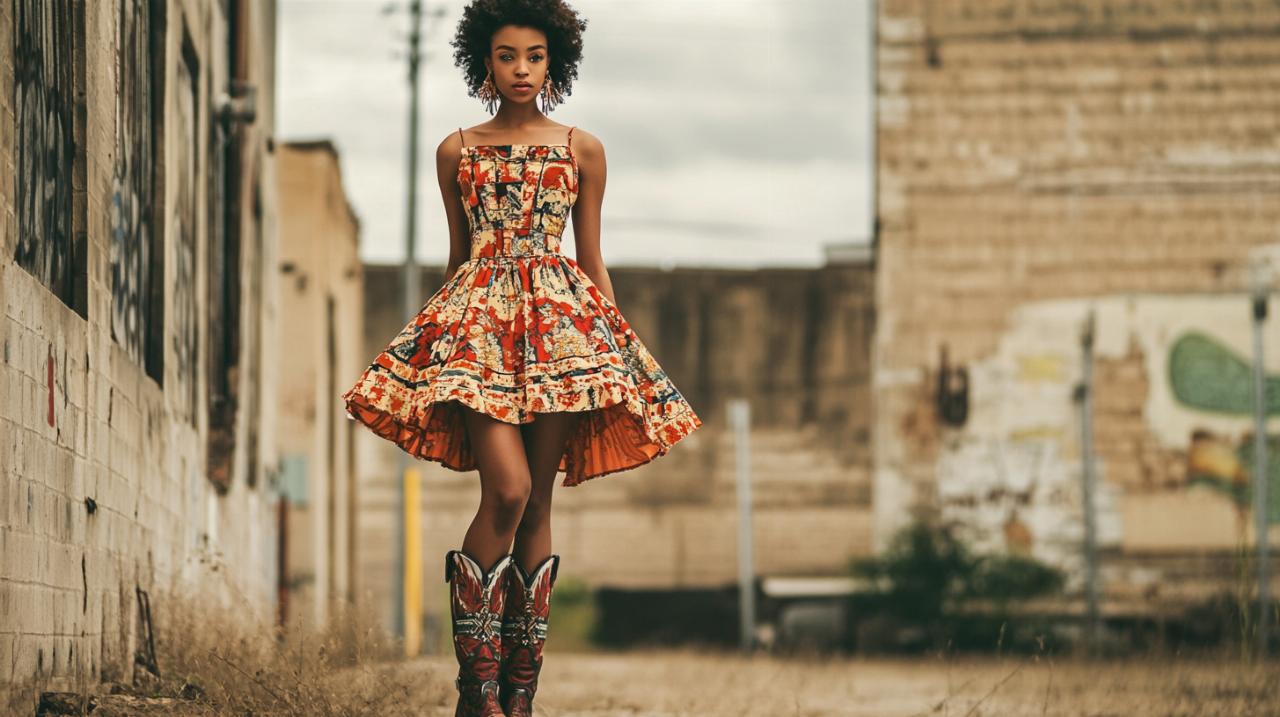The digital age has completely transformed how we discover and engage with style, offering unprecedented access to the latest looks from around the globe. Whether you're after cutting-edge streetwear or sophisticated formal attire, the internet provides endless opportunities to refresh your personal style and keep pace with what's current. Understanding where to look and how to navigate this vast online landscape can make all the difference in curating a wardrobe that feels both modern and authentically you.
Navigating the Digital Fashion Landscape: Where to Spot the Freshest Styles
The world of fashion has undergone a remarkable shift in recent years, with the internet becoming the primary stage for brands, designers, and style enthusiasts to showcase their creativity. Gone are the days when you had to wait for glossy magazines to arrive or visit physical shops to see what's new. Today, the digital realm offers instant access to runway shows, emerging designers, and street style from every corner of the planet. This democratisation of fashion has made it possible for anyone with an internet connection to stay informed about what's happening in the industry, making it easier than ever to find inspiration and discover pieces that resonate with your personal aesthetic.
Top online destinations for trend hunting
When it comes to identifying the most reliable platforms for spotting emerging styles, several key websites and digital spaces stand out as essential resources. Fashion-focused e-commerce sites have evolved beyond simple retail spaces to become comprehensive trend hubs, offering curated collections that reflect current movements in design and style. Many of these platforms feature editorial content alongside their product listings, providing context and inspiration that helps shoppers understand how to wear new pieces. Additionally, dedicated fashion blogs and online magazines continue to play a vital role in interpreting runway trends for everyday wear, breaking down high-fashion concepts into accessible styling advice. An online fashion trends discovery guide typically highlights these destinations as starting points for anyone looking to refresh their wardrobe with contemporary pieces. Beyond traditional fashion websites, technology has enabled new types of platforms to emerge that use advanced analytics and artificial intelligence to predict and track trends in real time. These systems monitor data from hundreds of fashion weeks and thousands of brands, offering insights that were previously available only to industry insiders. Such tools can identify emerging patterns weeks before they hit the mainstream, giving fashion-forward individuals a significant advantage in staying ahead of the curve. The integration of reporting and analytics into fashion platforms has made it possible to understand not just what's popular now, but what's likely to gain traction in the coming months.
Using Social Media Platforms to Stay Ahead of the Curve
Social media has fundamentally altered the fashion landscape, transforming it into something more immediate, inclusive, and interactive than ever before. Platforms like Instagram, TikTok, and Pinterest have become indispensable tools for both brands and consumers, creating spaces where style ideas can spread rapidly and reach global audiences within hours. Instagram serves as a visual portfolio for designers, influencers, and everyday fashion enthusiasts, allowing them to showcase their looks and inspire others. TikTok has introduced a dynamic, video-first approach to fashion content, where styling tips, haul videos, and trend challenges can go viral and influence purchasing decisions on a massive scale. Pinterest remains a favourite for those who prefer to curate mood boards and collect inspiration for future outfits, offering a more organised approach to discovering new styles. The speed at which trends now emerge and evolve on these platforms has accelerated the entire fashion cycle, sometimes referred to as the fast fashion phenomenon, where styles that appear on social media can be translated into available products within weeks. This rapid turnover has sparked important conversations about sustainability and ethical production, as consumers and brands alike grapple with the environmental impact of such quick consumption cycles. Influencers have become central figures in this new landscape, wielding significant power to promote trends and products to their dedicated followings. Their ability to connect with audiences on a personal level has made them valuable partners for brands seeking authentic engagement. However, this shift has also created a more democratic fashion environment where anyone with creativity and a smartphone can contribute to the ongoing conversation about style. Brands that succeed in this space are those that maintain authenticity, engage meaningfully with their audience, and provide genuine value beyond mere product promotion. Looking ahead, the future of fashion on social media will likely incorporate even more advanced technologies, including virtual reality experiences and artificial intelligence-driven personalisation, whilst also placing greater emphasis on ethical responsibility and sustainable practices.
Building your wardrobe: practical tips for incorporating new trends

Discovering the latest trends is only the first step in creating a wardrobe that feels both current and personal. The real challenge lies in selecting pieces that not only reflect what's fashionable but also work within your existing collection and suit your lifestyle. Building a functional wardrobe requires a strategic approach that balances novelty with practicality, ensuring that new additions complement what you already own rather than creating a disjointed collection of items that never quite work together. Understanding your personal style preferences, body shape, and daily needs will help you make informed decisions about which trends to embrace and which to admire from afar.
Mixing contemporary pieces with timeless classics
One of the most effective strategies for maintaining a stylish wardrobe is learning to blend contemporary pieces with timeless classics, creating a balance that feels both fresh and enduring. This approach allows you to experiment with current trends without committing your entire wardrobe to styles that may feel dated in a few seasons. Start by investing in high-quality basics that form the foundation of your wardrobe: well-fitted jeans, classic white shirts, versatile blazers, and neutral-coloured outerwear. These pieces never truly go out of style and provide a solid base upon which you can layer trendier items. When adding contemporary pieces to your collection, consider how they can be styled with your existing classics. A statement accessory in a trending colour or pattern can transform a simple outfit, whilst a fashion-forward top can be grounded by pairing it with classic trousers or a timeless skirt. This method of mixing ensures that you get maximum versatility from each purchase, as new items can be worn in multiple ways rather than being limited to a single look. The key is to maintain a sense of cohesion throughout your wardrobe, choosing contemporary pieces that align with your overall aesthetic rather than chasing every trend that appears online. For those in the fashion industry, whether working with clothing, footwear, jewellery, accessories, or home goods, understanding how trends can be incorporated into various product categories is essential. Brands, distributors, and manufacturers all benefit from staying informed about current movements in design whilst maintaining the quality and consistency that customers expect. Effective inventory management, production management, and order management systems help ensure that new styles can be introduced smoothly without disrupting established product lines. For businesses operating in specialised areas such as uniform and workwear, swimwear and loungewear, bridalwear, or made-to-measure services, adapting trends to suit specific customer needs requires careful consideration and planning.
Smart shopping strategies for online fashion purchases
Shopping for fashion online offers convenience and access to a global marketplace, but it also requires a thoughtful approach to ensure you're making purchases that you'll love and actually wear. Before clicking that checkout button, take time to research the retailer, read customer reviews, and understand their return policy. Sizing can vary significantly between brands, particularly when shopping internationally, so consulting size guides and measuring yourself accurately can prevent disappointment. Many shoppers find it helpful to keep a note of their measurements for various brands, especially for items like Tommy Hilfiger clothing where fit can differ from other labels. When considering an item, think about how it will integrate into your existing wardrobe and whether you have at least three different ways to style it. This rule helps avoid impulse purchases that end up unworn because they don't pair well with anything you own. Pay attention to fabric composition and care instructions, as these factors significantly impact the longevity and wearability of a garment. Natural fibres and well-constructed pieces generally offer better value over time, even if they require a slightly higher initial investment. For those interested in textile quality and construction, understanding these details becomes even more important. Take advantage of technology to enhance your shopping experience. Many platforms now offer B2B platforms and mobile sales apps that provide detailed product information, customer feedback, and even virtual try-on features. These tools can help you make more informed decisions and reduce the likelihood of returns. Additionally, integrating your fashion purchases with broader financial planning using tools like Shopify integration, Xero integration, or QuickBooks integration can help you track spending and maintain a budget. If you're building a collection of specialised items such as outdoor and sporting goods, consider the specific performance requirements alongside aesthetic appeal. Practical features matter just as much as style when it comes to functional clothing and accessories. Finally, don't overlook the value of customer management and communication when shopping with new retailers. Brands that offer excellent customer service, clear communication, and reliable warehouse management tend to provide better overall experiences, making them worth returning to for future purchases. As the fashion industry continues to evolve with advances in artificial intelligence, trend forecasting, and production techniques, staying informed about these developments can help you make smarter, more sustainable choices that align with both current trends and long-term values.



